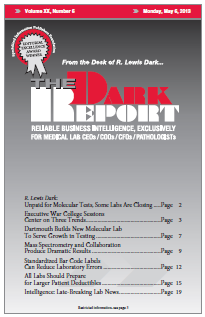CEO SUMMARY: Demand for specialized reference and esoteric testing is so robust at Dartmouth Hitchcock Medical Center in New Hampshire that the academic center is building an expanded laboratory facility to accommodate the increased volume of tests it handles each year. A favorable trend supporting these developments is the steady decline in the cost of …
Dartmouth Builds New Lab to Serve Growth in Testing Read More »
To access this post, you must purchase The Dark Report.


